

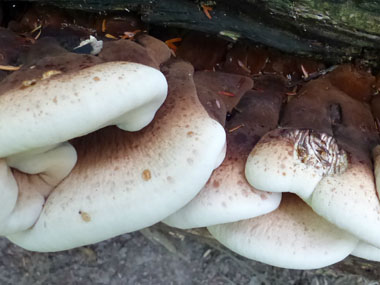
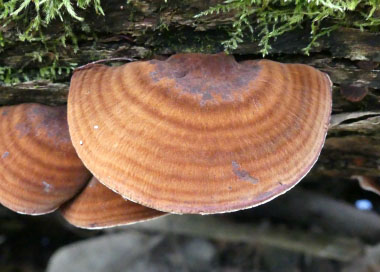
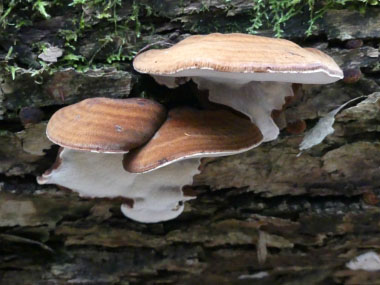
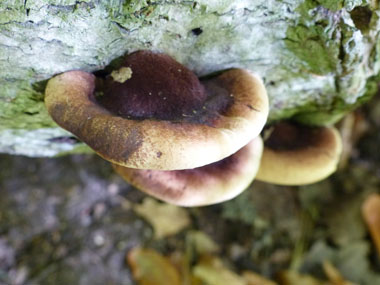
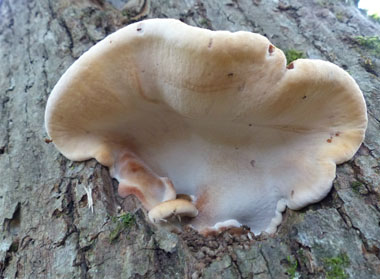

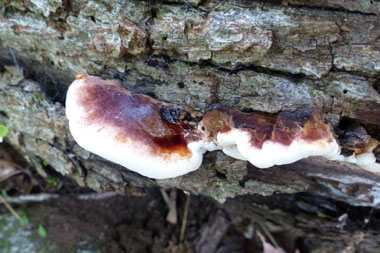
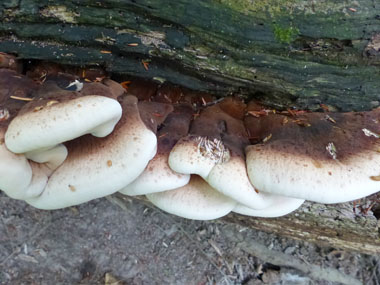
Do not eat any fungi that has not been properly identified by a qualified professional, some are DEADLY when ingested. All edible wild fungi MUST be cooked.
This fungi occurs singly or in groups on fallen hardwood tree trunks and branches sometimes in overlapping clusters. It causes a white to yellow rot of the trees that separates the annual rings in the wood and often smells like anise. They can fruit until the first hard freeze.
Type
Distinguishing Features
This fungi’s cap has a folded-over edge above a spreading pore surface making it look like mummified ears. Late fall polypore are velvety to touch and sometimes they emit droplets of water, which ball up on top of the resinous surface like beads. When young it is quite thick and fleshy, with a pale brownish surface and a thick white margin. In maturity they are dark brown, sometimes with zones of color, fairly smooth, dry, and tough. A tan to reddish brown resin often encrusts these fungi, whose interiors are white. There is no stem.
Height
These do not have a stem to give it height but caps are up to 25 cm (10”) wide and 2.5 cm (1”) thick.
Habitat
Saprobic on the deadwood of conifers and hardwoods and conifers. Prefers both recently fallen wood and on old downed wood.
Spore Print
White.
Season
September to November.
Gills
not applicable.
Edibility
This fungi is said to be edible when young due to high water content; although edible this is not necessarily palatable. They become cork-like with age and inedible.
Other Name
Late Fall Polypore.
Recipes
To support our efforts please browse our store (books with medicinal info, etc.).
Winter Survival Food Handbook

PDF Plant Magazines
Types of Wild Food
Geographic Zones Seasons
Disclaimer
EdibleWildFood.com is informational in nature. While we strive to be 100% accurate, it is solely up to the reader to ensure proper plant identification. Some wild plants are poisonous or can have serious adverse health effects.
We are not health professionals, medical doctors, nor are we nutritionists. It is up to the reader to verify nutritional information and health benefits with qualified professionals for all edible plants listed in this web site. Please click here for more information.
Why Edible Wild Food?
- Food costs are rising
- Free, wild food is readily abundant
- Wild food adds nutrition to your diet
- Wild food can help treat various medical conditions







